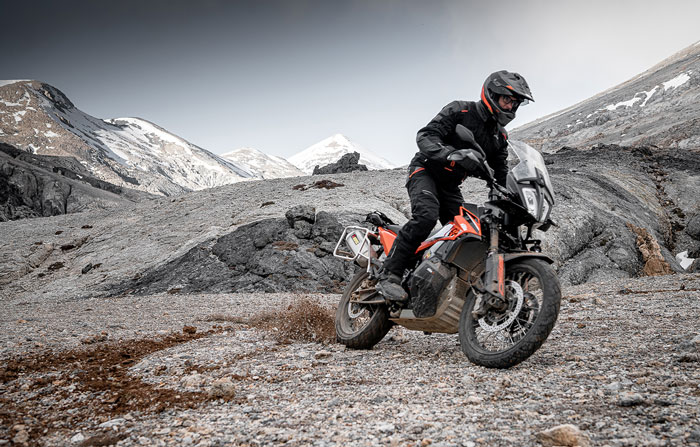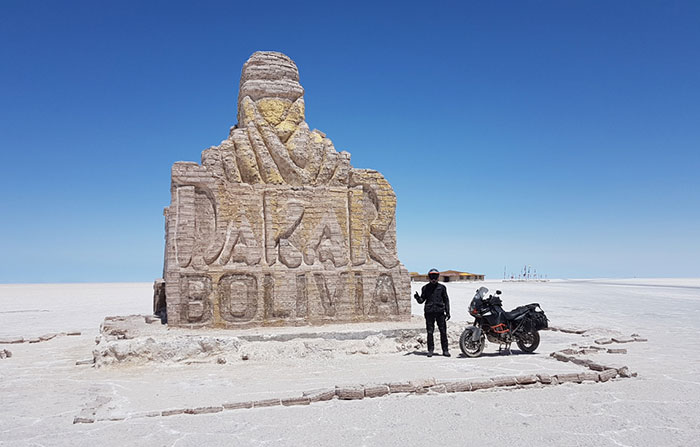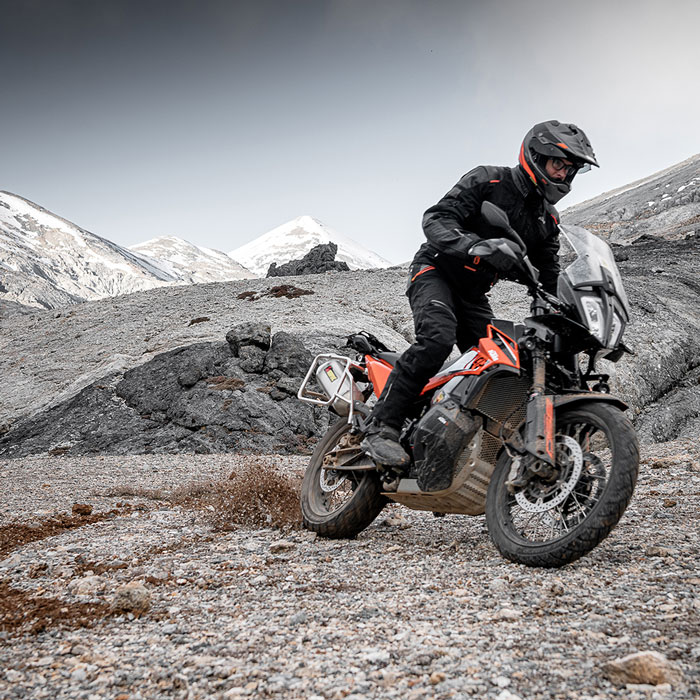5 TIPS TO IMPROVE YOUR WINTER RIDING EXPERIENCE
Winter is always the harshest season to ride bikes. Icy roads, freezing temperatures, and sudden changes in weather conditions make the winter months the most challenging for all motorcyclists. But this doesn’t mean we can’t enjoy riding even in these extreme conditions.
By: Paolo Cattaneo @paolocattaneophoto

PC @PaoloCattaneo
After traveling for over seven years and crossing 45 countries in both hemispheres, I had the fortune (or misfortune) to encounter all sorts of climatic conditions. As I traveled across Canada and USA during one of the coldest winters of the past decade, I feel I can share some of the tips that kept me going and allowed me to ride in sub-zero temperatures.

PC @PaoloCattaneo
1. Layer-Up
When it’s close or below zero degrees outside, it’s hard to find any single piece of garment to provide proper protection against the elements. The best way to prevent hypothermia while riding is to wear multiple layers of clothing, including some thermal/technical inner layers.
These will help your body maintain a constant and acceptable temperature for longer periods of time. A good trick also is to wear a rainproof jacket on top of your riding gear; other than preventing rain from reaching your skin, the rainproof construction material is also very good to block the cold air from filtering through.

PC @HeinzMitterbauer
Some of the items that could help you with winter riding are also a balaclava, a neck warmer, some proper winter gloves, some technical socks, a windbreaker sweater etc. While crossing the USA from east to west, I would wear everything I had in terms of clothing in order to stay warm. I was hit by several snowstorms, even in states where usually not much snow gets deposited during the year. I remember I arrived in New Mexico and, after riding in the cold for 650 km, I decided to treat myself and sleep in a nice warm motel instead of camping outside overnight.
The sky was blue and there were no ominous clouds in the sky, but my feet were frozen, so I needed a break from the cold air. When I woke up in the morning, I peeked through my room windows and saw my bike parked outside covered in 30 cm of snow.

PC @HeinzMitterbauer
2. All the heat
Your hands, feet and head are the most exposed parts of your body and where the chill usually is being transferred across your body. Hence, these parts will get colder sooner, as your body will try to maintain the core temperature constant for the other vital organs.
A set of heated grips, handlebar muffs as well as a heated seat are must-haves for real winter riding. For your hands, heated grips and muffs are so fundamental for winter riding that once you’ll give those a try, you will question yourself why you didn’t start to use those earlier. A heated seat is also an extra piece of equipment that may come in handy, especially if you keep your bike parked outside.

PC @HeinzMitterbauer
3. Avoid icy spots at any cost
When riding in winter you need to keep an extra eye on where the sun shines or not. Especially on mountain roads, it can make a crucial difference if a road gets beamed by the sun or stays in the shade for most of the day.
If a road doesn’t get hit by the sun till the afternoon, this means that the night humidity may have crystallized on the tarmac surface and created what is mostly known as black ice.

PC @PaoloCattaneo
Keep in mind that this may or may not occur in your country as tarmac composition or salt could prevent ice from forming on it. Regardless, it’s always better to drop a gear and slow down (stay away from the brakes) as soon as you see some shade and tight corners.
I had to learn the “black ice lesson” obviously the hard way. While riding towards the glacier at the back of Ushuaia in Argentina, I came across a section of twisties, all radiated by the warm sunny rays of the day. One particular corner instead was in the shade, but It didn’t look much different from the others. Needless to say, that as soon as I touched it, my front wheel slid to the side, making me hit the ground and slide on my arse in less than a millisecond. Luckily, I was riding uphill so gravity somehow allowed me to stop quickly. But the lesson of the day was indeed learned.

PC @HeinzMitterbauer
4. Protect your battery
It’s never fun to realize your engine won’t start in a cold morning. One of the most frequent batter-killers of is certainly the cold. If you keep your bike parked in the street or a cold garage for a long time, you may have already experienced it. A battery’s chemical composition doesn’t allow it to survive and keep the charge when exposed to extremely low temperatures, hence you could encounter the possibility of finding it hard to start your motorcycle in winter.
If your bike is sitting in a garage and you have a power outlet at reach, it’s better to have it constantly connected to a charger during the winter months, even if you use your bike every day. The other alternative is to get one of those portable jump starters and keep it with you at all times. While riding across the top of Yukon, it became challenging to start my bike in the cold and humid Canadian mornings. Luckily, I always had my small jump starter to give an extra kick to my poor battery.
Cold can also affect the battery life of your mobile devices. If you keep your smartphone or GPS attached to your bike while riding, make sure it is not directly exposed to the cold winds otherwise you may damage the battery and jeopardize its battery life. A good idea is to use KTM MY Ride app instead, allowing your bike to receive GPS, music, and caller ID info on your dash via Bluetooth, while you can keep your phone secured in your inside jacket pocket.

PC @PaoloCattaneo
5. Wash any salt off
Something that doesn’t get taken much into consideration usually is that most countries put salt on roads in winter to avoid black ice. As a big part of the bike’s bodywork is made of plastic and all screws are built-in stainless steel, there is not much of a concern in this sense, but If you happen to frequently use your motorcycle in winter, make sure you wash it with fresh water to the bottom part, as soon as you get home.
Salt can damage both metal and electronic components quite easily, and it is for the most part invisible to the eye. I remember when I rode across the highest salt flat in the world in Bolivia; that was undoubtedly a spectacular ride, but It wasn’t the best for my motorcycle, which had salt crystals spread all over the engine block. Water, salt, and heat are a bad combo, and they would corrode even the most resistant of material.

PC @PaoloCattaneo



